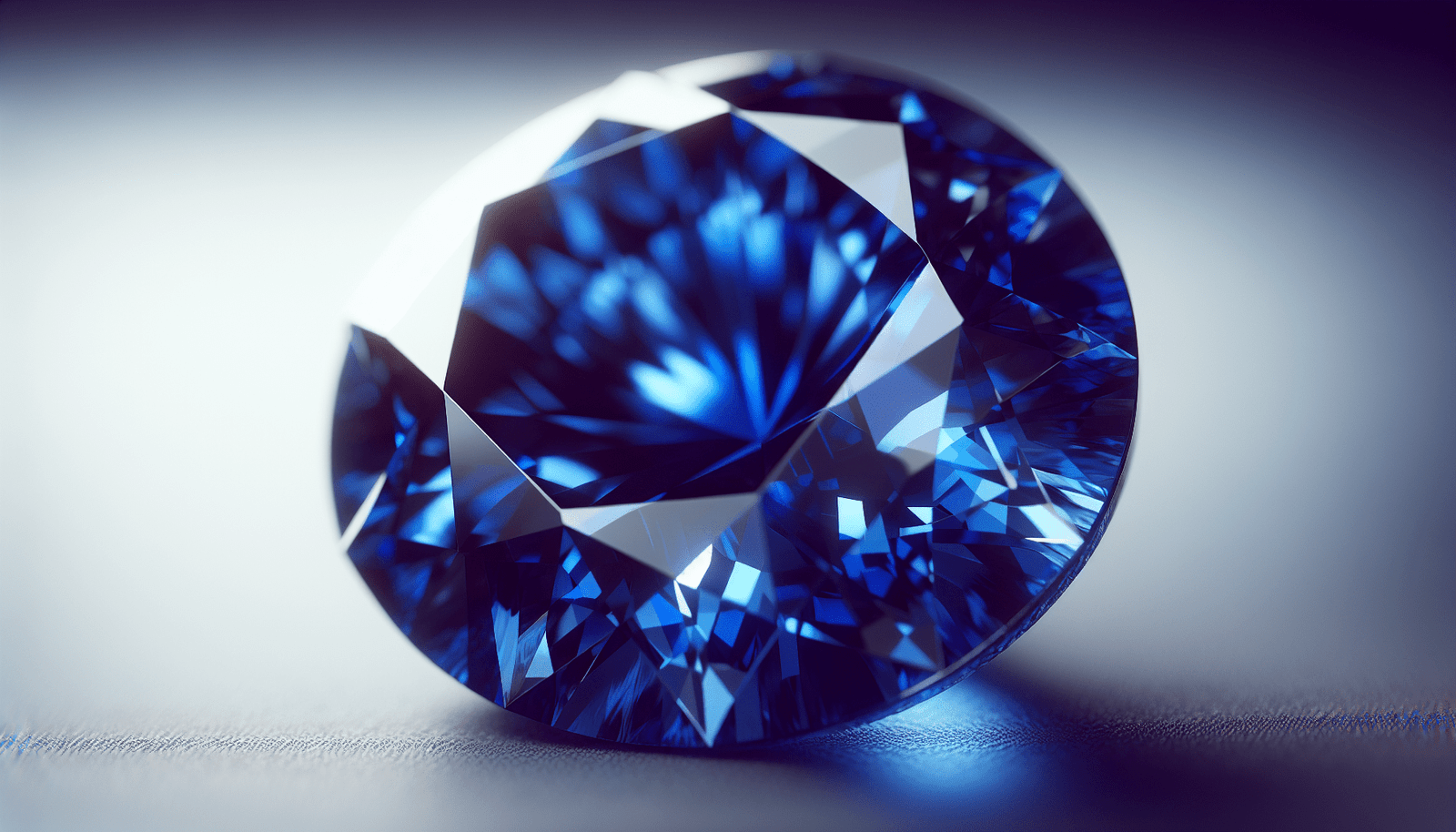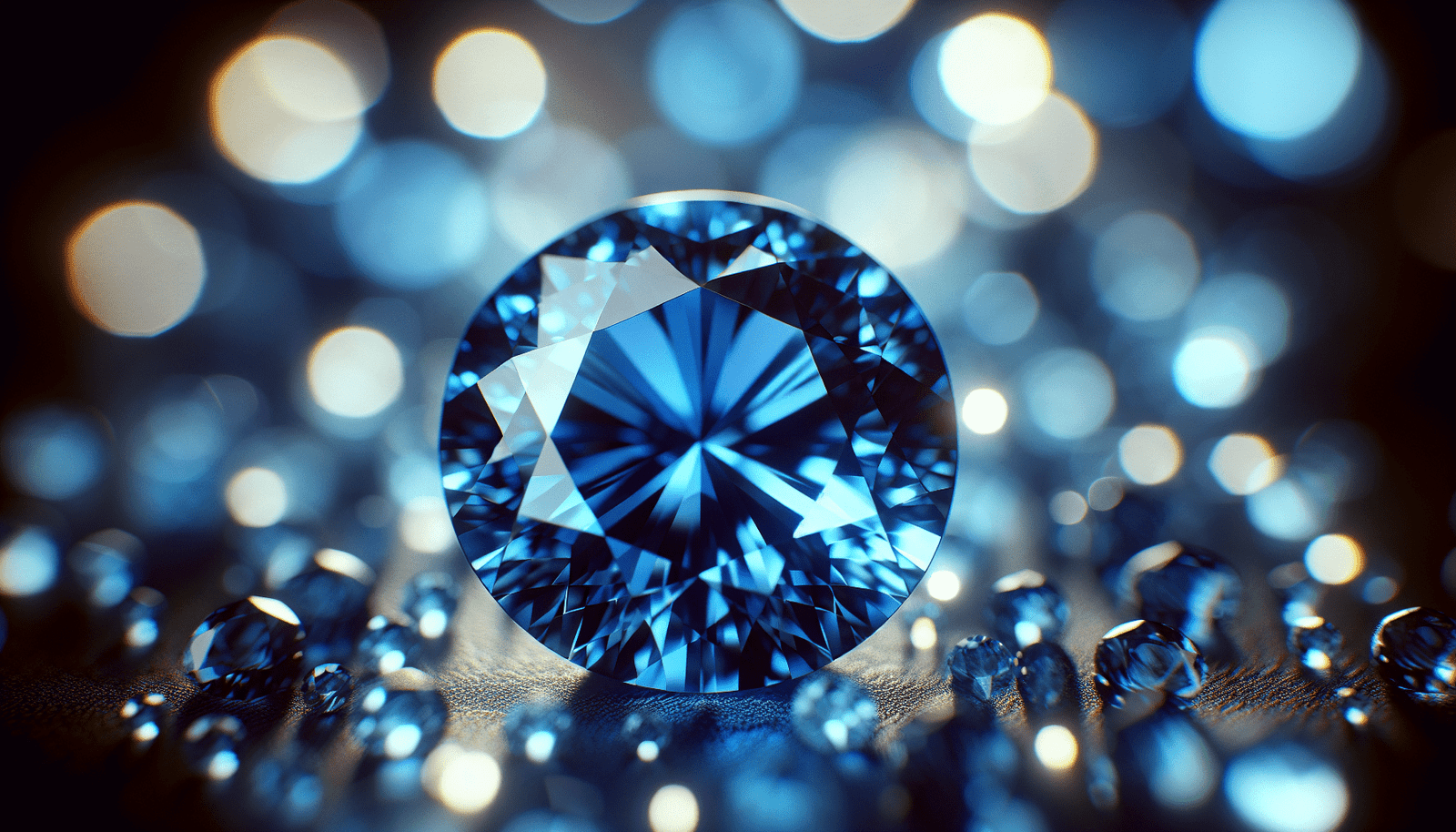Are sapphires worth anything? It’s a question that might have popped into your mind while browsing jewelry stores or flipping through glossy magazines. Let’s embark on an engaging journey to uncover the true worth of sapphires and explore the factors that influence their value.

What Are Sapphires?
When you think of a sapphire, perhaps a deep, mesmerizing blue gemstone comes to mind. But did you know that sapphires come in a rainbow of colors? Beyond the classic blue, they can range from pink to yellow, green, and even colorless. In essence, sapphires are a type of corundum, a mineral composed of aluminum oxide. Their vibrant colors result from trace elements, such as iron, titanium, chromium, and vanadium.
The Different Colors of Sapphires
Let’s break down the various colors of sapphires. While blue is the most famous, each hue has its own unique allure and value.
| Color | Description |
|---|---|
| Blue | The most well-known variety, often ranging from deep royal blue to lighter sky blue. |
| Pink | Varies from delicate pastel pinks to intense magentas, gaining popularity in recent years. |
| Yellow | Sunny and bright, yellow sapphires can range from pale lemon to rich, golden yellows. |
| Green | These are less common but can feature stunning shades from light mint to deep forest green. |
| Padparadscha | A rare, salmon-colored sapphire, blending hues of pink and orange. Highly prized by collectors. |
| White | Essentially colorless, resembling diamonds and used as a diamond alternative in jewelry. |
Each color has its own charm and worth, influenced by factors like intensity and purity of color.
Historical Significance and Lore
Sapphires have long held a special place in history and mythology. They were adored by ancient cultures, with Persians believing that the sky was painted blue by the reflection of sapphires. In medieval Europe, they were symbols of the heavens, often worn by clergy and royalty to represent wisdom, virtue, and divine favor. Even today, they maintain an aura of mystery and fascination.
Symbolism and Modern Appeal
In addition to their regal history, sapphires are associated with qualities like sincerity, faithfulness, and nobility. They are frequently chosen for engagement rings and other meaningful jewelry. Perhaps you’ve heard of the iconic blue sapphire engagement ring worn by Princess Diana and later by Kate Middleton? This has only heightened the modern-day allure and perceived worth of sapphires.

Factors Influencing Sapphire Value
So, what makes one sapphire more valuable than another? Several factors come into play, each contributing to a stone’s overall worth.
Color
Color is the most crucial factor. The preferred shades for blue sapphires are vivid and deep, such as royal blue or cornflower blue. For other colors, the saturation and consistency of the hue are significant.
Clarity
Clarity refers to the presence of inclusions within the sapphire. While some inclusions are acceptable, too many can diminish the stone’s transparency and sparkle. However, certain inclusions can create unique optical effects, like the star effect in star sapphires, which can enhance their value.
Cut
The cut of a sapphire significantly impacts its brilliance. A well-cut stone will reflect light beautifully, enhancing its color and overall appearance. Unlike diamonds, there aren’t standardized cuts for sapphires, giving jewelers the freedom to maximize the gem’s natural allure.
Carat Weight
As with most gemstones, the larger the sapphire, the more valuable it is likely to be. However, two sapphires of the same carat weight can differ in value based on their color, clarity, and cut quality.
Origin
Certain locations are famous for producing high-quality sapphires. Kashmir sapphires, for instance, are renowned for their mesmerizing blue hue and velvety texture. Other notable sources include Myanmar (Burma), Sri Lanka, and Madagascar. The origin of a sapphire can often boost its value due to the prestige associated with certain locales.
Treatment
Many sapphires undergo treatments to enhance their color and clarity. Heat treatment is the most common and generally accepted practice. However, untreated sapphires, especially those with excellent color and clarity, can command higher prices due to their natural beauty and rarity.
| Factor | Description |
|---|---|
| Color | The hue, saturation, and tone of the sapphire. Deep, vivid colors are typically more valuable. |
| Clarity | The presence of inclusions. While some are acceptable, too many can reduce value unless they create unique effects like asterism (star effect). |
| Cut | The quality of the cut affects how well the sapphire reflects light. |
| Carat Weight | Larger stones are generally more valuable, but quality factors like color and clarity are also important. |
| Origin | Sapphires from renowned sources like Kashmir, Myanmar, Sri Lanka, and Madagascar often hold higher value. |
| Treatment | Untreated stones are often more prized, but certain treatments to enhance appearance are widely accepted. |
Investment Potential
If you’re considering sapphires as an investment, it’s important to be aware of both the potential rewards and risks. High-quality sapphires, especially those that are untreated and from famous locations, can appreciate over time.
Historical Price Trends
Historically, the prices of fine sapphires have seen a steady increase, particularly in the last few decades. The demand for unique and high-quality gemstones has driven prices up, making sapphires a potentially lucrative investment.
Demand in the Market
The market for sapphires remains robust, with growing interest from collectors and consumers alike. The rise of social media and online platforms has also expanded the global market, giving investors more opportunities to buy and sell these precious stones.

Synthetic Sapphires
Synthetic sapphires, also known as lab-grown or man-made sapphires, have the same chemical composition as natural sapphires but are created in controlled environments. They’re often more affordable and can be a great option if you’re looking for the beauty of sapphires without the high price tag.
Differences in Value
Unsurprisingly, synthetic sapphires are valued much lower than their natural counterparts. However, they are increasingly popular in both technology (due to their hardness) and jewelry.
Caring for Your Sapphire Jewelry
Sapphires are durable gemstones, boasting a hardness of 9 on the Mohs scale, making them suitable for everyday wear. However, proper care will ensure they remain vibrant and damage-free.
Cleaning
To clean your sapphire jewelry, you can use a mild soap solution and a soft brush. Avoid harsh chemicals or ultrasonic cleaners, as these can damage the stone’s surface or any delicate settings.
Storage
Store your sapphire jewelry separately from other pieces to prevent scratching or chipping. Using fabric-lined boxes or pouches can help keep them safe.
Conclusion
So, are sapphires worth anything? Absolutely! These captivating gemstones hold both monetary and sentimental value. Their worth is influenced by various factors including color, clarity, cut, carat weight, origin, and whether they’ve been treated. From historical significance to modern appeal, sapphires continue to enchant and captivate us.
If you’re ever in a position to acquire a sapphire, remember to consider the factors that contribute to its value and choose a piece that resonates with you. After all, the true worth of sapphires lies not just in their monetary value but in the joy and meaning they bring into our lives.



